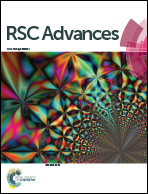Study on wear behaviour and wear model of nitrile butadiene rubber under water lubricated conditions
Abstract
Nitrile Butadiene Rubber (NBR) is widely used to make water-lubricated rubber stern tube bearings in the marine field. Its tribological properties, which significantly influence its reliable life, directly affect the safe navigation, covert performance and operating costs of a ship. This study aimed to investigate the tribological properties and wear model of NBR under water-lubricated conditions. A CBZ-1 tribo-tester was used to conduct sliding wear tests between NBR pins and 1Cr18Ni9Ti stainless steel discs under water-lubricated conditions. The surface morphologies of the worn NBR pins were examined using laser-interference profilometry and scanning electron microscopy. In addition, the friction coefficients, ageing times and wear rates were analysed and compared to study the tribological properties of NBR and to identify the factors that affect its wear mass loss. The results demonstrated that different ageing times, velocities and loads had a significant effect on the friction and wear properties of the NBR specimens. The ageing times positively correlated with the friction coefficients and the wear mass losses between the rubbing pairs. The anti-tear properties of NBR deteriorated when the material was aged at a high temperature for an extended period of time, which reduced its wear-resistance. The main wear mechanism between the rubbing pairs was severe adhesion tearing wear under the water-lubricated conditions. A comprehensive empirical model for its wear rate estimation was established based on the wear and friction power. The model revealed the relationships between wear and velocity, as well as load and shore hardness. The result produced by the model was largely consistent with the experimental results. The knowledge gained in this study is anticipated to provide the theoretical data for a wear theory study of NBR and be useful for the optimisation of water-lubricated rubber stern tube bearings.

- This article is part of the themed collection: Tribology

 Please wait while we load your content...
Please wait while we load your content...